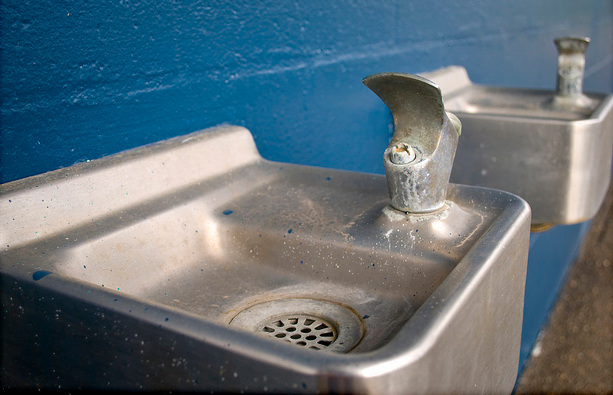Ed note. I asked Dispatch contributor Annie Feighery to weigh in on how Hurricane Sandy may affect water supplies on the East Coast. Annie is the CEO and co-founder of mWater, an organization that develops tools and technologies for monitoring safe water. They have a mobile app that can read and upload mapped water contamination information to the web for local and remote knowledge. I thought she could bring an interesting perpective on the water and sanitation issues that may be prevalent in the wake of the storm.
This week, mWater is central to conversations among the global water science and policy communities taking place at the UNC Water and Health Conference, where monitoring water quality is seen as a key need for the post-2015 Sustainable Development Goals.
Among the challenges these meetings face, however, is that most people involved in them have never personally experienced a water crisis. Hurricane Sandy may very well change those numbers.
This morning, water began flooding New York City’s Battery Park neighborhood. By tonight’s high tide around 8:30 pm, the storm surge and waves will overtake much of the region’s Zone A, including many subway tunnels. A potable water event seems likely within the next 24 to 48 hours. Given that most people in the Northeastern US are facing a serious impending disruption of vital services like water, electricity, and communication networks for the first time in their lives, here are some tips to get through the chaos:
With Hurricane Sandy beginning to impact the Northeast United States, many people are facing a serious impending disruption of vital services like water, electricity, and communication networks for the first time in their lives. Here are some tips to get through the chaos:
-You have probably heard the advice to fill your bathtub with water in advance of the storm. Water supplies are highly vulnerable to damage during a storm.
-Flooding causes more dissolved organic matter to enter the reservoirs and reduces the ability of water systems to maintain disinfection levels—this is where boil water advisors usually come from.
-Power outages can cause municipal water pumps to go down, causing a water outage.
-Water outages, once restored, cause a dramatic pressure change in the pipes. For a city like New York with very old pipes, this means every building is vulnerable to develop major water leaks from ruptured pipes.
-Broken pipes in the ground become entry points for contaminants like fecal and other bacteria. Sewage and potable supply pipes often run together and can be damaged, allowing for cross-contamination.
Given all these risks to your water supply, here are the most important steps to take to protect yourself:
-Before the storm gets more violent this afternoon and evening, save potable water in your bathtubs, cook pots, beer-brewing carboys, etc. This is no time to filter your water, though. The chlorine residue is protective for stored water, helping guard you from new contaminants for a few days.
-Don’t interact with stored water—think of germ theory and keep your fingers away.
-Use known-to-be safe water for washing, cooking, drinking, and hygiene that involves the face, like brushing your teeth.
-If there is a water outage, use your bathtub water for flushing the toilet and flush as seldom as you can. Pour a bucket of the water into the back of the tank until the float raises, then flush.
-Following the storm, if you have not received an all-clear from the municipal water authorities or if you suspect your water has become contaminated, boil it, use chlorine tablets, or add bleach (8 drops or 1/8 tsp per gallon of water, let it sit 30 minutes before drinking, filter out with a cloth if it looks cloudy).
-Don’t boil chlorinated water if you plan to store the water afterward, as boiling denatures the protective chlorine residue.
For more information, visit the EPA website on water contamination in emergencies and the FDA website on food and water safety in emergencies.
